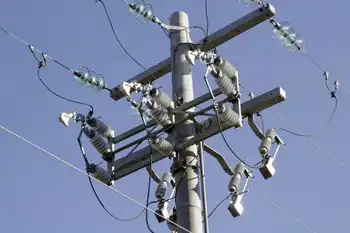Rural telcos, utilities should partner on smart grids
By Telephony
Electrical Testing & Commissioning of Power Systems
Our customized live online or in‑person group training can be delivered to your staff at your location.

- Live Online
- 12 hours Instructor-led
- Group Training Available
Michael Smalley, chief operating officer of Carina Technology, told a 2009 FTTH Conference & Expo audience that combining their traditional assets, such as utility company rights of way and external power capabilities with telcos' intelligent networks and data-gathering abilities enables both sides to reduce costs and potentially generate new revenues through sales of energy management services to consumers.
Paving the way to smart grid deployment are decreasing energy reserves, legislation to force greater efficiency of power grids and billing by time of usage and the growing intelligence being built into home networks and appliances, Smalley said. But electrical networks today, even the Automatic Meter Reading networks already deployed, lack the intelligence to give consumers specific information about how they are consuming electrical power within the home.
"All of these trends are forging a new industry," Smalley said. "I grew up through the telecom world over the last 20 years, and I think this can be as big or bigger than anything else we've seen."
Utility companies want the ability to manage the electrical load, based on real-time information, and that information is increasingly available through home automation networks and appliances with built-in capabilities for energy management, Smalley said.
But utilities don't have an intelligent two-way network to capture that data. By combining forces with telcos and using either existing copper or a newer fiber optic network, a utility can accumulate and analyze data, Smalley said. From the telco perspective, working with the utility company could earn access to power poles at a discounted rate and access to external powering at the home to make installation of advanced network such as FTTH less expensive. Telcos also could generate new revenues by selling usage data to both the electrical company and to consumers, who can then use it to manage and reduce their usage, Smalley said.
"The utility has either obsolete infrastructure or no communications infrastructure in place," Smalley said. "The fiber they have deployed is very data-limited. By partnering with the telco, they avoid the recurring cost and responsibility of maintaining a network that, based on the industry's track record, would be obsolete in three to five years. The telco can work with something that will be there for a long time."
Carina has worked with a rural utility and telco in Idaho and with a telco, utility coop and master builder in Virginia to implement smart grid technology through partnerships. The company estimates telcos could save between $300 and $400 on advanced network installations, in addition to utility pole discounts, while utilities save up to $500,000 in network capex for wireless AMR, Smalley said.
"Independent telcos are largest deployers of FTTH in the US," Smalley said. "Utilities need access to next-gen networks like FTTH but often do not have the resources, desire or experience to build those networks. These deployments are in markets where service areas overlay existing rural electric coop and municipal infrastructure. There are opportunities to collaborate and leverage resources that can lead to win-win scenarios."











